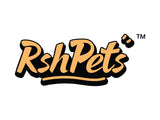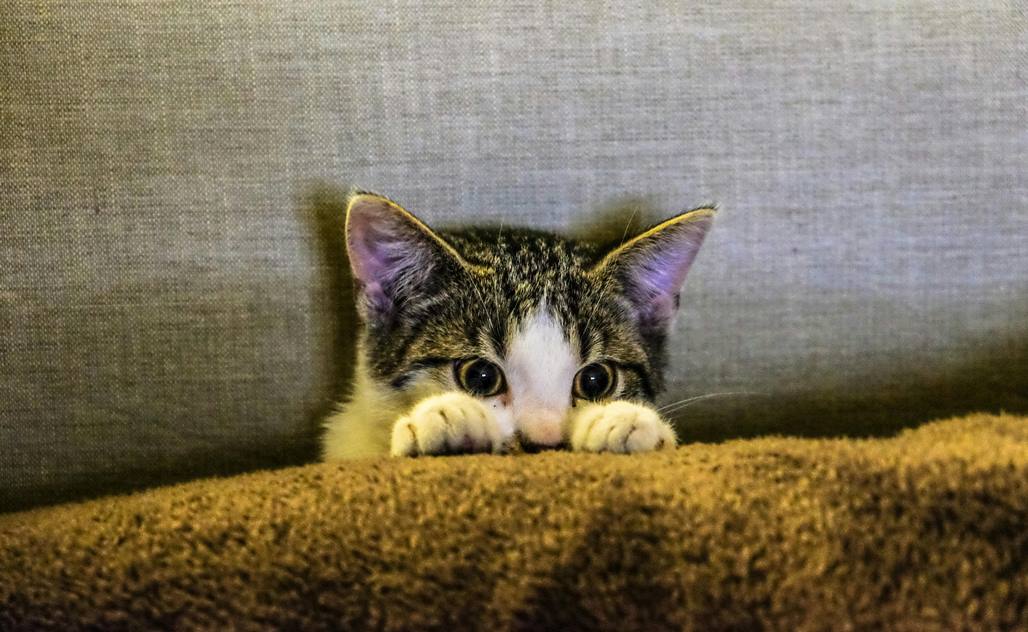In this Article
Creating a wall-mounted "cat route" (also known as a cat highway or vertical territory) is an innovative way to turn unused wall space into a safe, enriching playground for your feline friends. This setup channels their natural energy, prevents boredom and reduces conflict, especially in small homes or multi-cat households. By providing elevated pathways, you can give cats a sense of security and adventure without cluttering your floor space. In this comprehensive guide, we'll walk you through every step-from planning and measurements to materials, installation, and long-term maintenance-so you can build a cat run that your cat will not only use, but truly love. We'll expand on key concepts with practical examples, safety insights, and customization ideas to ensure your project is both functional and aesthetically pleasing.
Why vertical space matters to cats
Cats are instinctive hunters and predators, evolved to thrive in three-dimensional environments. In the wild, they climb trees and ledges to survey territories, escape threats, and ambush prey. Indoor life can feel cramped without vertical options, leading to problems such as lethargy, destructive behavior, or intercat aggression. A well-designed cat run addresses this by providing
- Safety: High vantage points allow cats to observe their surroundings without feeling vulnerable. For example, a shelf overlooking the living room allows them to observe family activities from a safe distance.
- Exercise: The spring-jump-land cycles mimic natural movements and burn off excess energy that might otherwise manifest as midnight zooms or scratched furniture. Regular use can help maintain a healthy weight, especially for indoor-only cats.
- Stress Relief: Predictable resting places reduce anxiety in busy households. Studies by animal behaviorists show that elevated spaces can lower cortisol levels in cats, promoting a calmer demeanor.
- Enrichment: Introducing new textures, scents, and lines of sight keeps their minds stimulated. This is critical to preventing boredom-related problems such as excessive meowing or inappropriate elimination.
By incorporating vertical territory, you're essentially creating a "cat highway" that aligns with their biology and makes your home more cat-friendly and harmonious.
Start with your cat's personality and needs
One size doesn't fit all when it comes to cat trails - tailor the design to your cat's unique characteristics. Spend a week observing their behavior to gain insight:
- Bold Explorers: These adventurous cats thrive on challenges such as high jumps, swinging bridges, and varying heights. For example, a confident Siamese might enjoy a course with jumps up to 24 inches (60 cm) and exposed perches.
- Cautious Cats: Shy or timid cats prefer gradual inclines, closely spaced steps (every 20-30 cm), and semi-enclosed shelves with partial walls or tunnels for shelter.
- Senior or Mobility Impaired Cats: Older cats or those with arthritis need wider platforms (12-16 inches deep), smaller gaps, and non-slip surfaces such as rubber mats. Avoid steep jumps; consider ramps instead.
- Large Breeds: Breeds such as Maine Coons require sturdier construction with deeper shelves and reinforced supports to handle their weight (up to 10-15 kg / 22-33 lb).
- Multi-Cat Households: Designed for harmony by incorporating multiple entry/exit points and looped routes. This prevents one cat from "trapping" another and reduces territorial disputes.
Consider health factors as well - consult your veterinarian if your cat has conditions such as joint problems or poor eyesight. Personalization ensures that the track will be used, making it a daily treat rather than a dusty decoration.
Map the route: Planning for success
Before you hammer a single nail, sketch your wall to scale (use graph paper or apps like Room Planner). Identify key elements:
-
Starting Points: Start with existing furniture such as sofa backs, windowsills, or cat trees. Make sure they are stable and at a comfortable height (about 40-60 cm / 16-24 inches from the floor).
-
Waypoints: Place shelves vertically every 12-18 inches (30-45 cm). This spacing allows most cats to easily step or hop, mimicking natural tree branches.
-
Destinations: End with appealing spots such as a sunny window perch for bird watching or a cozy high bed with soft bedding.
-
Exits: Always include at least two exit options to avoid dead ends. A ramp or staggered steps work best for safe returns.
Aim for a looped or circular design over a straight line-this allows cats to circulate freely without awkward turns on narrow ledges. In small spaces, a zigzag pattern maximizes coverage. Use painter's tape to model the route on the wall and test it with your cat's favorite toy to gauge interest.
Safe dimensions for the real world
Getting the measurements right is critical for safety and usability. Here's a breakdown based on cat size and ability:
- Rack depth: 20-28 cm (8-11 in) for average cats; 30-35 cm (12-14 in) for larger cats. This allows for comfortable sitting, grooming and turning without the risk of overhanging.
- Walkway Width: 20-25 cm (8-10 in) for walkways; bridges should be 18-22 cm (7-9 in) with 5-10 cm (2-4 in) side rails to prevent falls.
- Vertical Spacing: 30-45 cm (12-18 in) standard; reduce to 20-30 cm (8-12 in) for kittens, seniors, or small breeds.
- Lip/Rail Height: A 2-4 cm (¾-1½ in) lip or rail minimizes slippage during jumps.
- Load Rating: Aim for 18-25 kg (40-55 lb) per shelf, allowing for dynamic forces from landings (which can triple static weight).
- Clearance: Allow 18-24 inches (45-60 cm) below the ceiling for easy movement and to prevent head bumps.
- Corner Headroom: Stagger shelves by at least 10 inches (25 cm) when changing directions to allow for smooth navigation.
These guidelines ensure that the route is ergonomic, reducing the risk of injuries such as sprains from missed jumps.
Choosing the Right Materials
Durability and safety drive material selection:
- Substrates: Choose 18-21 mm (¾ in.) plywood or solid hardwood for strength. Avoid cheap particleboard that warps under weight.
- Finishes: Use nontoxic, water-based polyurethane or hardwax oil. These resist scratches and are easy to clean; stay away from shiny finishes that attract fur.
- Traction surfaces: Carpet tiles, cork slabs, EVA foam or sisal rope wraps provide traction. Removable options such as self-adhesive carpet squares simplify maintenance.
- Hardware: Heavy-duty L-brackets or floating shelf supports rated for 50+ lb (23 kg). Secure with structural screws in studs (typically 16 inches (40 cm) apart); use toggle screws or masonry anchors for non-wood walls.
- Extras: Add felt pads for quiet landings, soft foam rails for comfort, and washable cushions for nap areas.
Prioritize pet-safe materials - look for low-VOC certifications to keep indoor air healthy.
Smart layouts for different rooms
Customize the design to fit the layout of your home:
- Studio Apartments: A compact Z-path over the sofa, connecting to a window seat and ramping down to a sideboard. This maximizes vertical space in tight quarters.
- Corridors: Stagger high steps along a wall to keep the floor clear for people. Add a tunnel for added intrigue.
- Home Offices: A perimeter loop over doors and bookcases, culminating in a "meeting shelf" behind your desk for cat companionship while you work.
- Kitchens or bedrooms: Avoid if possible due to hazards, but if necessary, position away from stoves or beds.
Incorporate existing elements such as door frames for anchoring to minimize wall damage.
Add bridges, tunnels, and ramps
Extend functionality with these features:
- Bridges: Use lattice or mesh with rails to connect gaps. Limit spans to 90-100 cm (35-39 inches); add center supports for longer spans to prevent sagging.
- Tunnels: Ideal for shy cats, fabric or cardboard tunnels attach between shelves and are removable for cleaning. They provide a sense of security while crossing.
- Ramps: Essential for accessibility, keep slopes under 30° with cross cleats every 10-12 cm (4-5 inches) for traction. Use them after surgery or for aging cats.
These elements add variety and make the trail more interesting.
Integrate scratching and scent elements
Encourage use by incorporating natural behaviors:
- Place sisal-wrapped posts or boards near transitions for claw care and scent marking.
- Add catnip or silvervine bags initially to attract interest and rotate them to maintain novelty.
This integration reduces unwanted scratching on furniture while reinforcing the trail as "their" space.
Aesthetics: Blending security with style
Make it visually appealing:
- Paint shelves to match walls or stain to match floors for a seamless look.
- Hide wiring in channels; use low-voltage, chew-proof LED lights when adding lighting.
- Rounded edges for a polished finish that's gentle on cats.
Beautiful design ensures it enhances rather than distracts from your décor.
Step-by-Step Installation Guide
Follow these steps for a safe build:
-
Tape the full-scale route to the wall and position furniture accordingly.
-
Locate and mark studs with a viewfinder; drill test holes to confirm.
-
Prepare shelves, apply tension and drill mounting holes.
-
Install the bottom shelf first, using two brackets per shelf to ensure levelness and no wobble.
-
Build upward, testing each with weights (7-9 kg / 15-20 lb).
-
Add bridges/ramps last, smoothing all edges.
-
Introduce your cat with treats and play; supervise initial use.
Patience during the setup pays off in longevity.
Unbreakable safety rules
- Always anchor to studs or use proper wall fasteners - never use drywall anchors alone.
- Avoid hazards such as heat sources, doors, or fragile items.
- No shelves above beds or cooktops.
- Inspect for wear and tighten hardware quarterly.
- Provide multiple safe descents to prevent jumps.
Adherence to this will prevent accidents.
Special considerations for different cats
- Kittens: Small gaps, rails and soft landings for their clumsiness.
- Seniors: Ramps, plush pads, and lower heights for joint comfort.
- Big Cats: Extra deep shelves and heavy duty brackets.
- Multi-Cat Homes: Loops, yield platforms, and segregated resources to avoid conflicts.
Customization to promote inclusivity.
Maintenance for long-term appeal
- Vacuum weekly and wash covers monthly.
- Rotate enrichments to keep them fresh.
- Address issues such as guarding by adding alternatives.
Regular maintenance keeps the route inviting.
Troubleshooting Common Problems
- Ignoring the track: Lower the entrance, add ramps and play there every day.
- Wobbly: Reinforce with cleats.
- Slip: Increase traction and add lips.
- Overcrowding: Expand with more loops.
- Clutter: Camouflage with paint.
Quick fixes restore functionality.
A starter layout to copy
Try this Z-path: Three 60×25 cm (24×10 in) shelves at 35 cm (14 in) intervals, bridged to a 35×35 cm (14×14 in) perch, ramped down at 20° to a sideboard. Dual egress via ramp and window step.
Ethical and Environmental Notes
Use FSC-certified wood and low-VOC products. For tenants, modular designs minimize damage.
Quick Planning Checklist
- Observe habits and choose starts.
- Sketch a loop with exits and steps.
- Select strong materials and hardware.
- Anchor securely; test progressively.
- Add scratchers; introduce playfully.
- Maintain regularly.
Building a cat route thoughtfully creates a gym, a sanctuary, and a behavioral outlet-all woven into the walls of your home. With these advanced tips, your project will be safe, beautiful, and endlessly entertaining for your cats.

